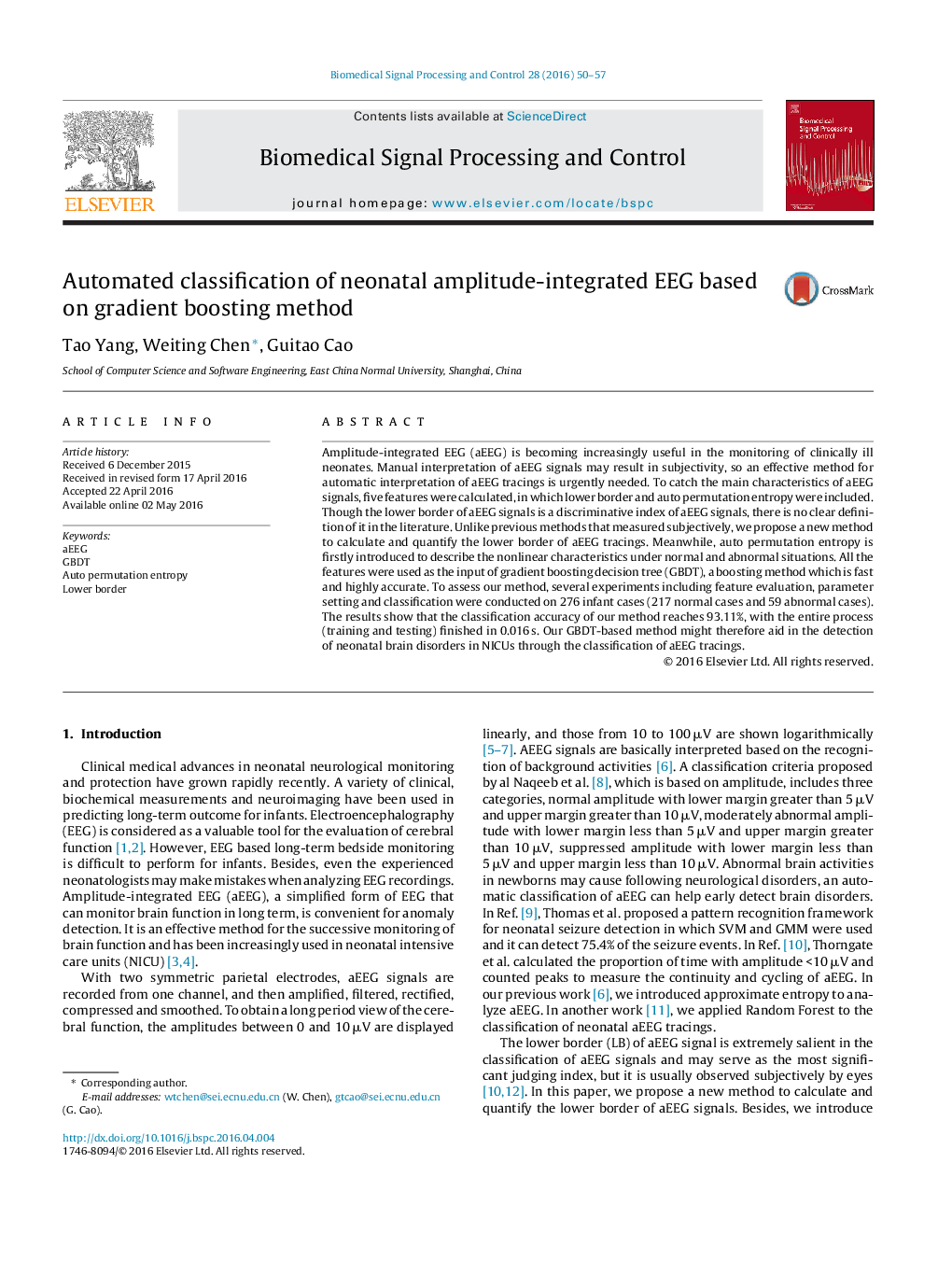| Article ID | Journal | Published Year | Pages | File Type |
|---|---|---|---|---|
| 558710 | Biomedical Signal Processing and Control | 2016 | 8 Pages |
•We redefined and quantified the lower border of aEEG.•Auto permutation entropy was firstly introduced to describe the characteristics of aEEG.•GBDT method was applied to the classification of aEEG signals.•The results using GBDT based on five features show a high classification accuracy of 93.12% and fast running speed.
Amplitude-integrated EEG (aEEG) is becoming increasingly useful in the monitoring of clinically ill neonates. Manual interpretation of aEEG signals may result in subjectivity, so an effective method for automatic interpretation of aEEG tracings is urgently needed. To catch the main characteristics of aEEG signals, five features were calculated, in which lower border and auto permutation entropy were included. Though the lower border of aEEG signals is a discriminative index of aEEG signals, there is no clear definition of it in the literature. Unlike previous methods that measured subjectively, we propose a new method to calculate and quantify the lower border of aEEG tracings. Meanwhile, auto permutation entropy is firstly introduced to describe the nonlinear characteristics under normal and abnormal situations. All the features were used as the input of gradient boosting decision tree (GBDT), a boosting method which is fast and highly accurate. To assess our method, several experiments including feature evaluation, parameter setting and classification were conducted on 276 infant cases (217 normal cases and 59 abnormal cases). The results show that the classification accuracy of our method reaches 93.11%, with the entire process (training and testing) finished in 0.016 s. Our GBDT-based method might therefore aid in the detection of neonatal brain disorders in NICUs through the classification of aEEG tracings.
